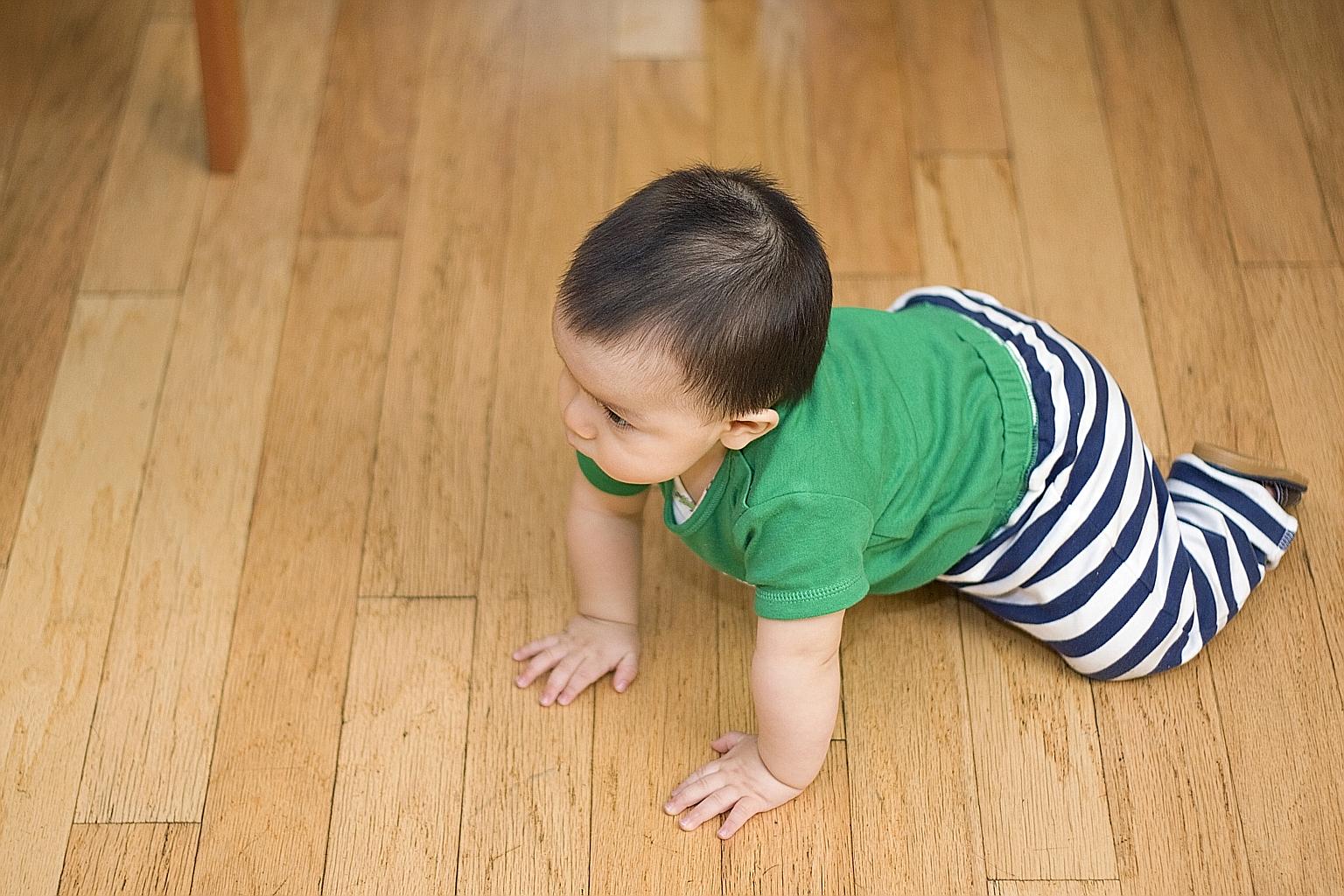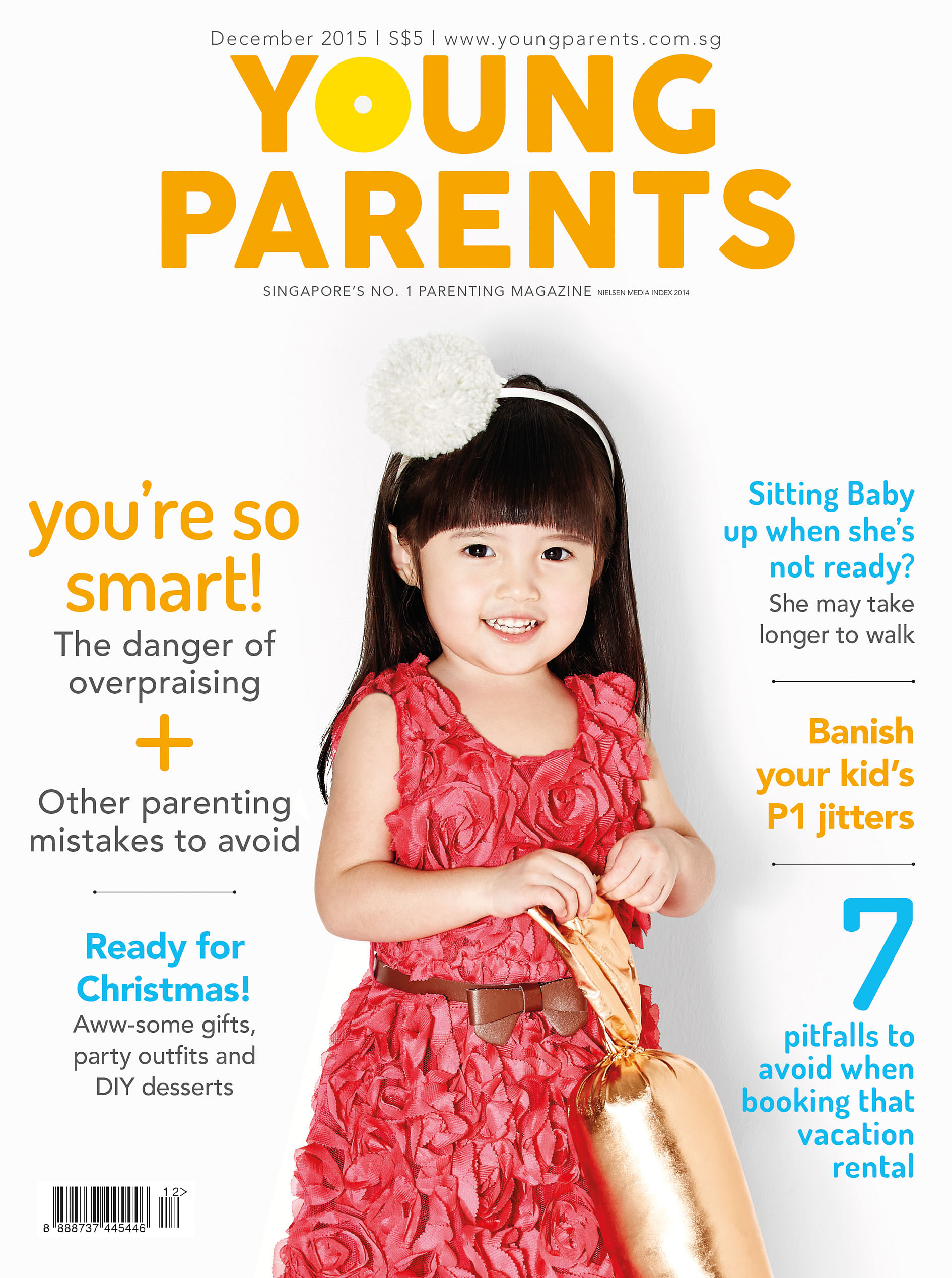Child's Play
How you handle your baby counts
If parents try to rush it, they can sabotage the development milestones of child
Sign up now: Get ST's newsletters delivered to your inbox

Babies should practise crawling and walking on a firm surface, say the experts. When parents place their baby on a mattress, the soft surface changes the way his natural movement develops as he cannot get a firm grip to move and explore, explains rehabilitation trainer Poh Ying Bin.
PHOTO: ISTOCKPHOTO
Follow topic:
Propping your floppy three-month- old up on a couch makes for a cute Instagram shot.
But that might change the way her motor skills and posture develop, said rehabilitation trainer Poh Ying Bin from Aileron Wellness.
In the first year of their lives, babies master the skills of lifting their heads, rolling over, sitting up, crawling and standing, before they take their first step.
During this critical period, how you handle your little one can affect the way he develops, said Mr Poh, who specialises in the development and movement of the body, known as developmental kinesiology.
"One of the most common mistakes that parents make is to put their babies in passive positions they are not ready for, such as sitting or standing," he said.
When parents try to rush it, they can sabotage their little one's development milestones because the child is not given the chance to build the muscles necessary to crawl, walk and run. Experts share five baby-care mistakes and how you should do it right.
YOU KEEP YOUR NEWBORN BABY SWADDLED ALL DAY AND NIGHT
Swaddling helps soothe a fussy, colicky infant, but restricting her movements 24/7 hampers her motor development. "When babies aren't given the chance to move, their bones, muscles and joint structures cannot develop in a way that helps them to move well later in life," Mr Poh explained.
Try this: Swaddle your newborn baby only at bedtime or when he naps. Avoid restricting his movements when he is awake, he advised. Your child may not be capable of making any purposeful movements, but that does not mean playtime is out of bounds. Flip your little one around and put him on his belly to play, using toys to entice him to reach out, he said.
YOU SIT YOUR LITTLE ONE UP WHEN HE ISN'T READY
A baby who is learning to sit up will attempt "oblique sits" around the age of seven to eight months, Mr Poh said.
He will roll over to his side and prop himself up using his hand.
But placing him in a passive sitting position when he is not strong enough to sit on his own may cause him to skip this development stage, he said.
"When your baby is used to being put into a sitting position, he no longer needs to try to get up from lying down."
Plus, if your little one is sitting all the time, he may take longer to nail other critical milestones like crawling, standing and walking.
Try this: Offer lots of floor time instead. It gives your child the freedom to work on his head-lifting, flipping, rolling and coordination until he is ready to sit up on his own.
While in a stroller or car seat, position the baby at a semi-reclined 45-degree angle to avoid overworking his hip joints, he advised.
YOU PUT HER IN A WALKER TO HELP HER GET THE HANG OF WALKING
This does more harm than good. According to Ms Ng Shin Huey, senior physiotherapist at the rehabilitation department at KK Women's and Children's Hospital, the equipment can slow down your little one's balancing and walking skills.
It may also cause abnormal walking patterns, which can be hard to correct later on.
Said Mr Poh: "If you look at how babies walk when they are in a walker, their legs are actually dangling and they are on their tippy toes. That's not the ideal movement pattern for walking."
Even worse, walkers are a safety hazard because they can topple over and cause serious injury.
Try this: Offer plenty of stable support around the house to help your child learn to pull herself to a standing position. This usually happens when she's around nine to 10 months old. Within a few weeks, she may even start cruising (walking sideways by holding onto furniture).
"You don't need to buy fancy equipment. The things you need to help your baby stand and cruise are readily found in most homes, like a low coffee table, sofa or even a sturdy chest of drawers," said Mr Poh.
While push walkers are a "lesser evil" compared to traditional baby walkers, they are still not the best way to help your little one take her first step, he said.
"To walk on their own, babies need sufficient strength and coordination to hold their body up and move their legs. Your baby moves differently when she uses a push walker, as she is supported by her hands," he explained.

YOU ALWAYS PLACE YOUR BABY ON HIS BACK
Although the American Academy of Pediatrics advises placing sleeping babies on their backs to lower the risk of sudden infant death syndrome, your infant still needs supervised tummy time to develop well.
While on her belly, she builds neck and upper body strength, as well as motor coordination skills - everything she will need to help her flip, sit, crawl, stand and walk in the later months, said Mr Poh.
Try this: You can start five-minute tummy time sessions when your newborn baby is around six weeks old, said Dr Wendy Sinnathamby, a specialist in paediatrics and consultant at Raffles Children's Centre. Be sure to watch her closely.
Aim to have her on her belly for up to 20 minutes each day by the time she is four months old.
YOU PUT HIM ON A MATTRESS TO PRACTISE CRAWLING, WALKING
A soft surface changes the way her natural movement develops as she cannot get a firm grip to move and explore, said Mr Poh.
Try this: If you find it too nerve-racking to watch her fall, get a non-slip play mat instead. "Some thin padding is fine. But if you notice your little one's feet sinking into the mat, that material is too soft for her."
The same principle applies when choosing footwear. Going barefoot is best for crawlers and new walkers. When going out, steer clear of shoes with thick, rigid soles. Opt for those with soft, flexible soles.
"The material should be thin enough to allow your little one's feet to feel the ground," he advised.
- This article first appeared in Young Parents magazine. Young Parents, published by SPH Magazines, is available in both digital and print formats. Go to www.youngparents.com.sg/subscription to subscribe and for more stories.

